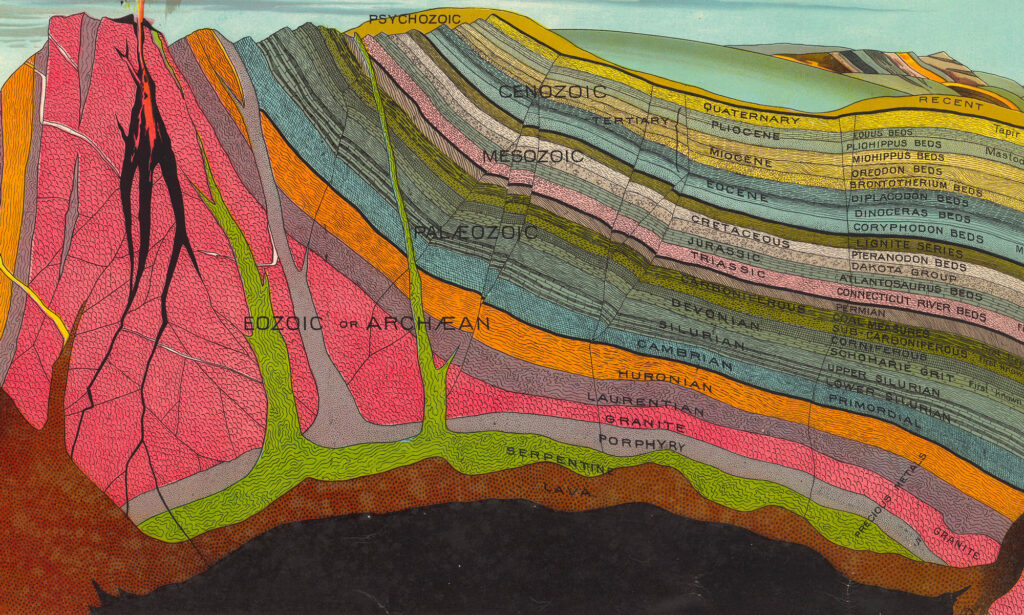Geological Formations: An Exploration of the Earth’s Physical Features
Geology is an incredibly fascinating field of study that examines the physical characteristics of the Earth, including its geological formations. From the well-known Rocky Mountains to the mysterious Grand Canyon, geological formations are a major part of the Earth’s landscape. This article will explore the various types of geological formations, their formation processes, and how they have shaped the Earth’s surface over time.
What is a Geological Formation?
A geological formation is a large, distinct physical feature or structure of the Earth’s surface. These features are typically formed by erosion, deposition, or volcanic activity. Examples of geological formations include mountains, canyons, valleys, plateaus, hills, and plains. They can also include geologic structures such as faults, folds, and thrusts.
Types of Geological Formations
There are several types of geological formations that can be found on the Earth’s surface. These include mountains, canyons, plateaus, and plains.
Mountains are large, steep, and jagged landforms that are usually formed by tectonic activity. The most common type of mountain formation is the result of the collision of two tectonic plates, resulting in the uplifting of the Earth’s crust. Examples of mountain ranges include the Rocky Mountains in North America and the Himalayas in Asia.
Canyons are deep, steep-sided, and often narrow valleys that are formed by the erosion of water or wind. The Grand Canyon in Arizona is a well-known example of a canyon formation.
Plateaus are large, flat areas of land that have been uplifted by geological activity. The Colorado Plateau is an example of a plateau formation.
Plains are large, flat areas of land that have been formed by the deposition of sediment over time. Examples of plains formations include the Great Plains of North America and the Eurasian Steppe.
Formation Process
Geological formations are formed by a variety of processes, including tectonic activity, erosion, deposition, and volcanism.
Tectonic activity is the movement of the Earth’s plates, which can cause the uplifting of the Earth’s crust. This can result in the formation of mountains, plateaus, and other geological features.
Erosion is the process of water or wind wearing away at the Earth’s surface, resulting in the formation of canyons, valleys, and other landforms.
Deposition is the process of sediment being deposited onto the Earth’s surface, resulting in the formation of plains and other landforms.
Volcanism is the process of volcanic activity, which can result in the formation of mountains and other landforms.
Importance of Geological Formations
Geological formations are important because they provide clues to the Earth’s history, as well as insights into its future. By studying geological formations, scientists can learn about the Earth’s past climate and environmental conditions, as well as the processes that have shaped the Earth’s surface over time. They can also use this information to predict future geological activity and climate change.
In addition, geological formations can also be used for economic purposes. For example, minerals can be mined from mountains, and canyons can be used for hydroelectric power generation.
Conclusion
Geological formations are an integral part of the Earth’s landscape and are formed by a variety of processes, including tectonic activity, erosion, deposition, and volcanism. These formations, such as mountains, canyons, plateaus, and plains, offer a diverse and visually stunning array of landscapes. Beyond their aesthetic appeal, geological formations play a crucial role in understanding Earth’s history and predicting future geological activity and climate changes. The study of these formations provides valuable insights into past environmental conditions and aids in economic activities such as mining. From the towering peaks of the Rocky Mountains to the sweeping plains of the Great Plains, geological formations stand as testaments to the dynamic forces that have shaped our planet over millions of years.

